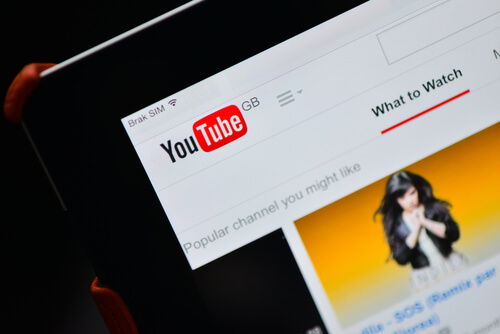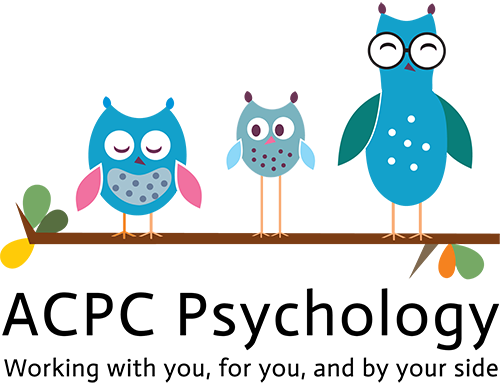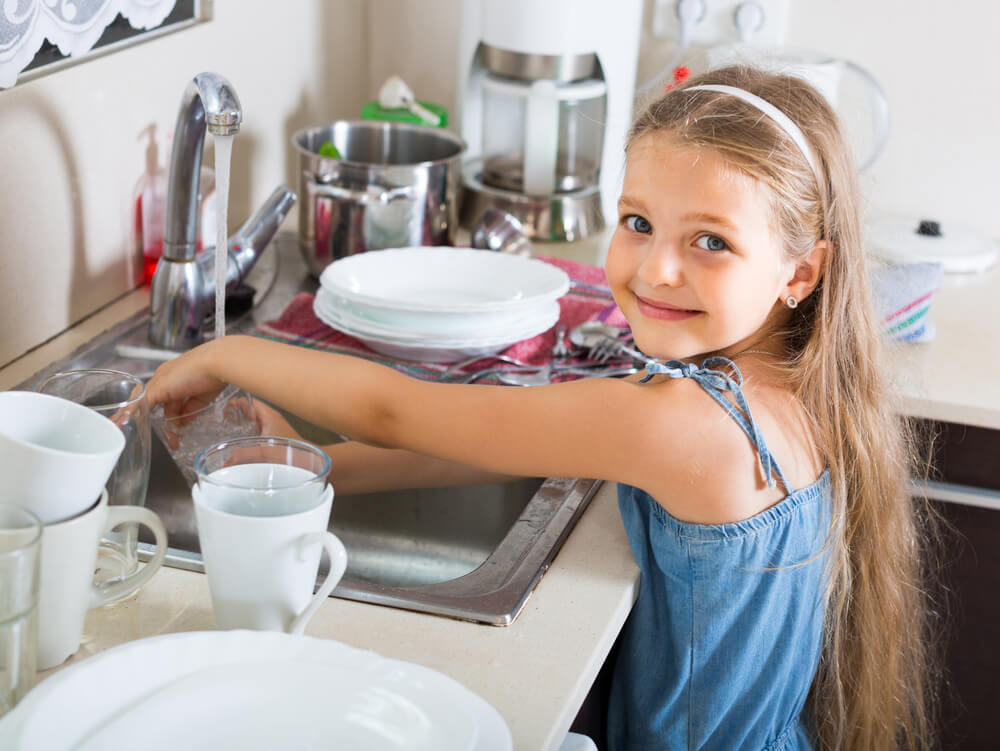You Tube: The Good, The Bad, and the Ugly

The classic childhood entertainments of television and film are increasingly being replaced for the newest generations by the huge diversity of content made available through YouTube. More and more often when discussing their futures, children are answering that they want to be YouTubers or Twitch streamers.
Many of the children that have significant restrictions on their access to video games have little to no supervision or restrictions on what they watch on YouTube. While YouTube is an amazing resource and source of entertainment, there are also significant drawbacks and risks on the platform, and parents would do well to be informed about what their children are watching on YouTube!!
The BAD
While there are a number of different successful YouTube genres, many kids watching YouTube are likely to be following a number of different YouTube vloggers (video bloggers). These entertainers establish close relationships with their fanbases and many young people form very close bonds with their favourite YouTube celebrities. These relationships are known as “parasocial relationships” and are actively cultivated by the creator through the appearance of authenticity and accessibility, however manufactured that appearance of authenticity might be (Ellis, 2018).
|
DID YOU KNOW: Google found that 70% of teenagers reported stronger relationships and engagement with YouTube celebrities than traditional celebrities; not only that, but 40% of teenagers reported that they believed that their favourite YouTube content creator understood them more than their real-life friends (O’Neil-Hart & Blumenstein, 2016). |
However, from the creator’s point-of-view, the bond with their viewers is necessarily one of a product producer with consumers, as many YouTube personalities make their income based on the number of views and subscribers they get (Jensen, 2018). A common refrain at the end of any YouTube video is “like, subscribe, and comment”, encouraging viewers to engage directly with the video and to promote the video within YouTube’s recommendation algorithm.
YouTube, unfortunately, has some of the most toxic comment sections on the internet – even when the videos themselves may be child-appropriate, the comments below may not be at all (Tait, 2016). Additionally, the appearance of authenticity means that product sponsorships and advertisements delivered by creators on the platform tend to appear more as genuine recommendations like one you would get from a friend, and less as a paid-for advertisement.
Many of these creators are relatively harmless, whose ill intentions go no further than building a subscriber base and recommending a sponsored product. However, many YouTube personalities are people who act in outrageous ways or take controversial stances on topics because that is more likely to get them views and thus advertisers. Provocateurs and pranksters on YouTube do not make for great role models for children, cultivating a toxic fan culture and issuing faux apologies (Alexander, 2018).
The UGLY
However, bad-taste pranksters are some of the tamer dangers to be driven by the YouTube algorithm. YouTube Kids was created in 2015 and purported to provide safe content for young children to watch; it quickly gained popularity and garners 11 million views weekly. Much of the content produced exclusively for children on the platform is generated by bots, often with names such as “Wrong Heads Disney Wrong Ears Wrong Legs Kids Learn Colors Finger Family 2017 Nursery Rhymes” in order to game the algorithm for maximum visibility.
At their most benign, these videos are flooding search results for children and on YouTube Kids, sucking up a significant amount of ad revenue and encouraging children to watch and rewatch their content. At their most malign, creators are intentionally making violent, disturbing content designed to slip past the YouTube Kids filter; these kinds of content have been present on the YouTube Kids platform since its launch in 2015 (Alexander, 2017).
|
DID YOU KNOW: Bridle (2017) found both human-created and bot-created content that used child-friendly characters such as Peppa Pig and Marvel superheroes and placed them in extremely violent and disturbing situations, such as Peppa drinking bleach or eating her father! What humans initially create proliferates through the website through bot-creation and the recommendation algorithm, such that hundreds of these videos can be created a week. |
While YouTube did undertake to clean a lot of this content up last year (Warzel, 2017), four hundred hours of video are uploaded to the platform every minute, and unfortunately in recent months these types of videos have remained popular on the platform. These videos are intentionally being created to slip past the YouTube Kids filter and are specifically designed to traumatise and abuse the children watching (Maheshwari, 2017).
Orphanides (2018) found that it took thirteen clicks on recommended related videos to go from legitimate children’s content from the BBC to disturbing content featuring children’s characters dying by suicide, and that the features included on the YouTube Kids app were insufficient both for filtering this content out ahead of time and for blocking the content from being seen again.
Some influencers have unfortunately even figured out how to exploit this tendency of YouTube in order to radicalise young people, in particular white teenage boys. Both through YouTube recommendations and through explicit brand promotion and networking, people who start looking at libertarian, conservative, or reactionary viewpoints on YouTube are drawn inexorably to more and more extreme right-wing content, such as white supremacist, misogynistic, and homophobic content (Lewis, 2018).
As result, many young men may start watching videos of people playing video games, and end up watching hateful, bigoted alt-right rhetoric (Cobbe, 2018). In addition, the marketing techniques used by members of the alt-right and white nationalist communities mean that even unrelated searches on YouTube will yield results from these creators (Solon, 2018).
The GOOD
While there are obvious and significant risks involved in unfettered and unsupervised access to YouTube, there are also many advantages associated with the platform. First and foremost, there are millions of hours of free, appropriate, and entertaining content for children.
YouTube is also an incredible resource for self-taught skills. The innumerable how-to and teaching resources on the website can help you learn to cook, exercise, fix household items, craft, dance, and more (Cosmic, 2017). Learning-related and educational content on YouTube garner 500 million views daily, and with one million learning videos shared daily (Ducard, 2017). A strength of YouTube is the entertaining nature of the learning content on the platform. They often feature entertaining personalities or bright cartoons, and students can learn from a teacher whose style works for them and in their own time (Hua, 2015). Some extremely successful athletes and artists learned their crafts on YouTube (Murano, 2017).
|
DID YOU KNOW: The Royal Society for Public Health in the UK surveyed young adults in 2017 on their social media usage and its benefits and detriments. YouTube was the only social media platform that was reported to have positive benefits for young users, with Facebook, Snapchat, Instagram, and Twitter having an overall negative impact on 14 to 24-year-old users! YouTube was reported to increase their understanding of other’s experiences, access to expert health information, emotional support, have a positive impact on depression, anxiety, and loneliness, and provide them an effective outlet for self-expression, developing self-identity and community building. However, YouTube was reported to have a significantly negative impact on their sleep, as well as negative impacts on body image, bullying, and fear of missing out. |
Some YouTube stars use their platform to publicise their own mental health struggles and solutions, raising awareness of and destigmatising mental illness. The sense of community built on the platform has provided people with a sense of belonging and validation for their struggles (Hossain, 2017), and have helped people get through periods of depression and isolation (Curtis, 2014).
The positive impacts of social media can include strengthening friendships, offering a sense of belonging, self-expression, genuine support, and allowing teenagers to do good (Knorr, 2018). This can be particularly true of isolated members of marginalised populations, such as the LGBTQ community – YouTube can provide young adults without access to information and resources a place to find understanding, knowledge, and explore their sexualities and gender identities (Suh, 2014).
The BOTTOM LINE
Like most forms of media, children’s YouTube viewing should be in moderation and with supervision and curation from their parents. Some common-sense approaches to minimising harmful content include turning off autoplay on YouTube and creating playlists of appropriate content; monitoring the watch history on YouTube will also allow parents to determine whether inappropriate content has slipped through.
YouTube’s algorithm means that there is more potentially harmful content on there than on television or child-appropriate video games, so the pattern in many families of closely monitoring gaming and TV and loosely monitoring YouTube would do well to be reversed.
Helpful tips:
- Speak to your children about what they are watching on YouTube, what they are learning, who they are following.
- Teach critical thinking skills and emphasise that not everything they see on the platform is factual, authentic, or genuine.
- Set collaborative, common-sense restrictions in place on how long they watch and what kind of content they have access to. And most of all,
- Engage in these things yourself, so that you have an understanding of how it works and who your child is watching, so that you can determine the appropriateness of the content.
Written by: Stephanie Morse, Registered Psychologist (clinical psychology registrar) at ACPC
References:
Alexander, J. (2017, December 8). YouTube Kids has been a problem since 2015 – why did it take this long to address? Retrieved from the Polygon website https://www.polygon.com/2017/12/8/16737556/youtube-kids-video-inappropriate-superhero-disney
Alexander, J. (2018, February 9). YouTube and Twitch helped to create an inescapable era of provocateur culture. Retrieved from the Polygon website https://www.polygon.com/2018/2/9/16987150/logan-paul-forest-video-dr-disrespect-tyler1-youtube-twitch
Bridle, J. (2017, November 7). Something is wrong on the internet. Retrieved from the Medium website https://medium.com/@jamesbridle/something-is-wrong-on-the-internet-c39c471271d2
Cobbe, J. (2018, June 6). Dismantling YouTube’s Radicalisation Engine. Retrieved from the Medium website https://medium.com/@jennifercobbe/https-medium-com-jennifercobbe-dismantling-youtubes-radicalisation-engine-6eee504c7062
Cosmic. (2017, August 3). Using YouTube to learn new skills. Retrieved from Cosmic website https://www.cosmic.org.uk/blog/using-youtube-learn-new-skills
Curtis, S. (2014, December 17). YouTube celebrities like Zoella helped me get through my depression. Retrieved from the Guardian website https://www.theguardian.com/commentisfree/2014/dec/17/youtube-celebrities-zoella-beat-depression
Ducard, M. (2017, May). What brands can learn from educational content on YouTube. Retrieved from the Think with Google website https://www.thinkwithgoogle.com/advertising-channels/video/educational-content-youtube-learning/
Ellis, L. (2018, September 11). YouTube: Manufacturing Authenticity (For Fun and Profit!) [Video file]. Retrieved from the YouTube website https://youtu.be/8FJEtCvb2Kw
Gillespie, T. (2018, January 16). The Logan Paul YouTube controversy and what we should expect from internet platforms. Retrieved from the Vox website https://www.vox.com/the-big-idea/2018/1/12/16881046/logan-paul-youtube-controversy-internet-companies
Hossain, T. (2017, June 30). The strength of online communities – how YouTube stars tackle poor mental health. Retrieved from WayAhead Mental Health Association NSW website https://wayahead.org.au/the-strength-of-online-communities-how-youtube-stars-tackle-poor-mental-health/
Hua, K. (2015, June 23). Education as entertainment: YouTube sensations teaching the future. Retrieved from the Forbes website https://www.forbes.com/sites/karenhua/2015/06/23/education-as-entertainment-youtube-sensations-teaching-the-future/#65ef054447c2
Jensen, K. T. (2018, August 31). We’re All Neighbors Now: Mr. Rogers and YouTube Culture. Retrieved from the Geek.com website https://www.geek.com/movies/were-all-neighbors-now-mr-rogers-and-youtube-culture-1750905/
Lewis, R. (2018, September 18). Alternative Influence: Broadcasting the Reactionary Right on YouTube. Retrieved from the Data & Society website https://datasociety.net/output/alternative-influence/
Knorr, C. (2018, March 14). 5 reasons you don’t need to worry about kids and social media. Retrieved from Common Sense Media website https://www.commonsensemedia.org/blog/5-reasons-you-dont-need-to-worry-about-kids-and-social-media
Maheshwari, S. (2017, November 4). On YouTube kids, startling videos slip past filters. Retrieved from the New York Times website https://www.nytimes.com/2017/11/04/business/media/youtube-kids-paw-patrol.html
Moser, B. (2017, August 21). How YouTube became the worldwide leader in white supremacy. Retrieved from The New Republic website https://newrepublic.com/article/144141/youtube-became-worldwide-leader-white-supremacy
Murano, G. (2017, January 20). 8 Amazing People Who Learned Their Skills From YouTube. Retrieved from the Oddee website https://www.oddee.com/item_99948.aspx
O’Neil-Hart, C., & Blumenstein, H. (2016, July). Why YouTube stars are more influential than traditional celebrities. Retrieved from the Think with Google website https://www.thinkwithgoogle.com/consumer-insights/youtube-stars-influence/
Orphanides, K. G. (2018, March 23). Children’s YouTube is still churning out blood, suicide and cannibalism. Retrieved from the Wired website https://www.wired.co.uk/article/youtube-for-kids-videos-problems-algorithm-recommend
Romano, A. (2018, January 3). Logan Paul, and the toxic YouTube prank culture that created him, explained. Retrieved from the Vox website https://www.vox.com/2018/1/3/16841160/logan-paul-aokigahara-suicide-controversy
Royal Society for Public Health. (2017). #StatusofMind: Social media and young people’s mental health and wellbeing. Retrieved from https://www.rsph.org.uk/our-work/campaigns/status-of-mind.html
Solon, O. (2018, September 19). YouTube’s ‘alternative influence network’ breeds rightwing radicalisation, report finds. Retrieved from the Guardian website https://www.theguardian.com/media/2018/sep/18/report-youtubes-alternative-influence-network-breeds-rightwing-radicalisation
Suh, B. (2014, July 7). YouTube aims to build community, hope for LGBT youth online. Retrieved from Human Rights Campaign website https://www.hrc.org/blog/youtube-aims-to-build-community-hope-for-lgbt-youth-online
Tait, A. (2016, October 26). Why are YouTube comments the worst on the internet? Retrieved from New Statesmen America website https://www.newstatesman.com/science-tech/internet/2016/10/why-are-youtube-comments-worst-internet
Tufekci, Z. (2018, March 10). YouTube, the Great Radicalizer. Retrieved from the New York Times website https://www.nytimes.com/2018/03/10/opinion/sunday/youtube-politics-radical.html
Warzel, C. (2017, November 22). YouTube is addressing its massive child exploitation problem. Retrieved from the Buzzfeed News website https://www.buzzfeednews.com/article/charliewarzel/youtube-is-addressing-its-massive-child-exploitation-problem
Welch, C. (2017, July 20). YouTube now responds to searches for terrorist videos with playlists that debunk extremism. Retrieved from the Verge website https://www.theverge.com/2017/7/20/16003296/youtube-redirect-method-anti-terrorist-videos-search



